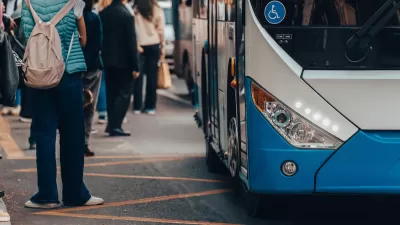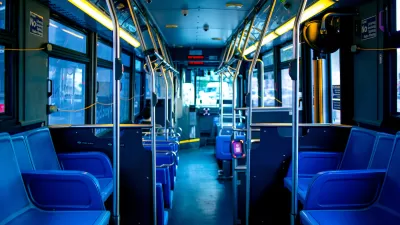Some of the country’s largest public transit systems are scrambling to find new sources of revenue as emergency aid dollars dry up, but some stakeholders don’t see their value.

Some of the nation’s largest public transit systems are still struggling to maintain operations and address massive budget gaps that only widened as the Covid-19 pandemic changed commuting and travel patterns.
Now, Ry Rivard explains in Politico, “historic tensions between urban needs and suburban wants are colliding, as fixes for transit systems depend on approval from elected officials — and their voters — who live outside the central business districts most transportation systems were designed to serve.”
Ultimately, public transit systems are just that: public. Most require some level of subsidies to keep fares affordable and service effective for the people who need it most. As Rivard explains, transit systems spend more money the farther out to suburban areas they go, because they spend more time and resources on fewer riders. “That creates an almost inevitable conflict between urban transit and everyone else. Either the mass transit network serves people outside the city and loses more money and needs more subsidies — or it doesn’t and therefore doesn’t do anything to garner their support.”
Using examples from New York City, Washington, D.C., and Philadelphia, Rivard describes the efforts some agencies are making to create new revenue streams and create more sustainable funding sources. So far, none have established a long-term fix.
FULL STORY: Suburban backlash threatens country’s biggest transit systems

Alabama: Trump Terminates Settlements for Black Communities Harmed By Raw Sewage
Trump deemed the landmark civil rights agreement “illegal DEI and environmental justice policy.”

Planetizen Federal Action Tracker
A weekly monitor of how Trump’s orders and actions are impacting planners and planning in America.

The 120 Year Old Tiny Home Villages That Sheltered San Francisco’s Earthquake Refugees
More than a century ago, San Francisco mobilized to house thousands of residents displaced by the 1906 earthquake. Could their strategy offer a model for the present?

In Both Crashes and Crime, Public Transportation is Far Safer than Driving
Contrary to popular assumptions, public transportation has far lower crash and crime rates than automobile travel. For safer communities, improve and encourage transit travel.

Report: Zoning Reforms Should Complement Nashville’s Ambitious Transit Plan
Without reform, restrictive zoning codes will limit the impact of the city’s planned transit expansion and could exclude some of the residents who depend on transit the most.

Judge Orders Release of Frozen IRA, IIJA Funding
The decision is a victory for environmental groups who charged that freezing funds for critical infrastructure and disaster response programs caused “real and irreparable harm” to communities.
Urban Design for Planners 1: Software Tools
This six-course series explores essential urban design concepts using open source software and equips planners with the tools they need to participate fully in the urban design process.
Planning for Universal Design
Learn the tools for implementing Universal Design in planning regulations.
Clanton & Associates, Inc.
Jessamine County Fiscal Court
Institute for Housing and Urban Development Studies (IHS)
City of Grandview
Harvard GSD Executive Education
Toledo-Lucas County Plan Commissions
Salt Lake City
NYU Wagner Graduate School of Public Service





























